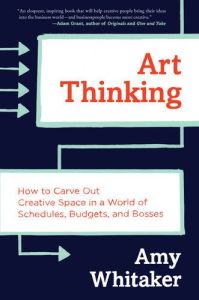Join getAbstract to access the summary!

Join getAbstract to access the summary!
Amy Whitaker
Art Thinking
How to Carve Out Creative Space in a World of Schedules, Budgets, and Bosses
HarperBusiness, 2016
What's inside?
To become more creative, use the methods you’ve learned in business.
Recommendation
Educator and writer Amy Whitaker combines her talents in art and business to explain how they serve one another. She proposes using a mind-set she calls “art thinking” to harness the joy and creative thought of making art in tandem with the structure and organization of business. Each chapter addresses one aspect of the creative process, from development to making financial decisions to producing your project. Whitaker offers activities to spur creative thinking and provides a step-by-step guide for allocating project resources. Her grounded business approach provides a path to creative work that won’t break the bank. Creative people will benefit from her manual, which getAbstract also suggests to managers who lead creative people but must maintain productive constraints.
Summary
About the Author
Amy Whitaker is an assistant professor in the Department of Art and Art Professions at New York University. She writes and teaches about the intersection of creativity, business and life. She holds a Yale MBA and an MFA from the Slade School of Fine Art at University College London.


















Comment on this summary
Although, what is missing is a relatable success story for the approach outlined, risks associated with getting into this approach and getting out of it without long term/ permanent damage if things aren't going as expected.